Argentina’s most important planted grape variety came by way of France, where it’s commonly called Côt (sounds like “coat”). Wines are loved for their rich, dark fruit flavors and smooth, chocolatey finish.
Primary Flavors
- Red Plum
- Blackberry
- Vanilla
- Sweet Tobacco
- Cocoa
Taste Profile
Handling
-
SERVE
60–68°F / 15-20°C
-
GLASS TYPE
Universal
-
DECANT
30 Minutes
-
CELLAR
5–10 Years
SERVE
60–68°F / 15-20°C
GLASS TYPE
Universal
DECANT
30 Minutes
CELLAR
5–10 Years
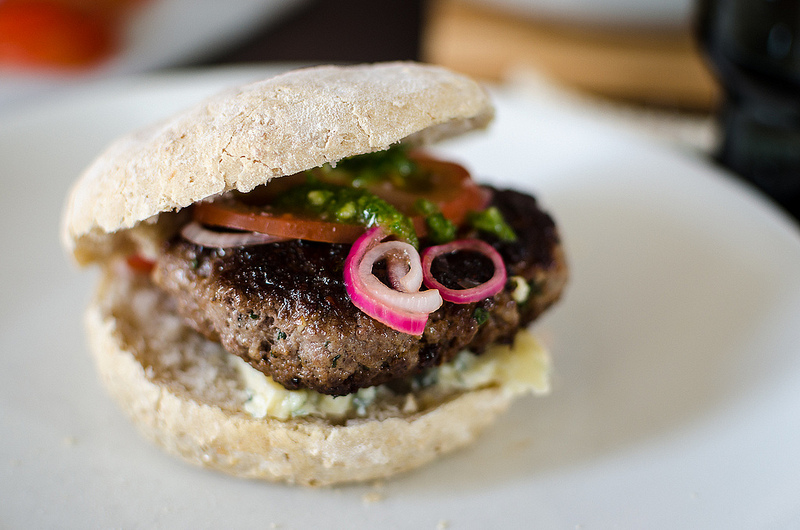
It is a great choice with leaner red meats (ostrich, anyone?) and does wonders with melted blue cheese.
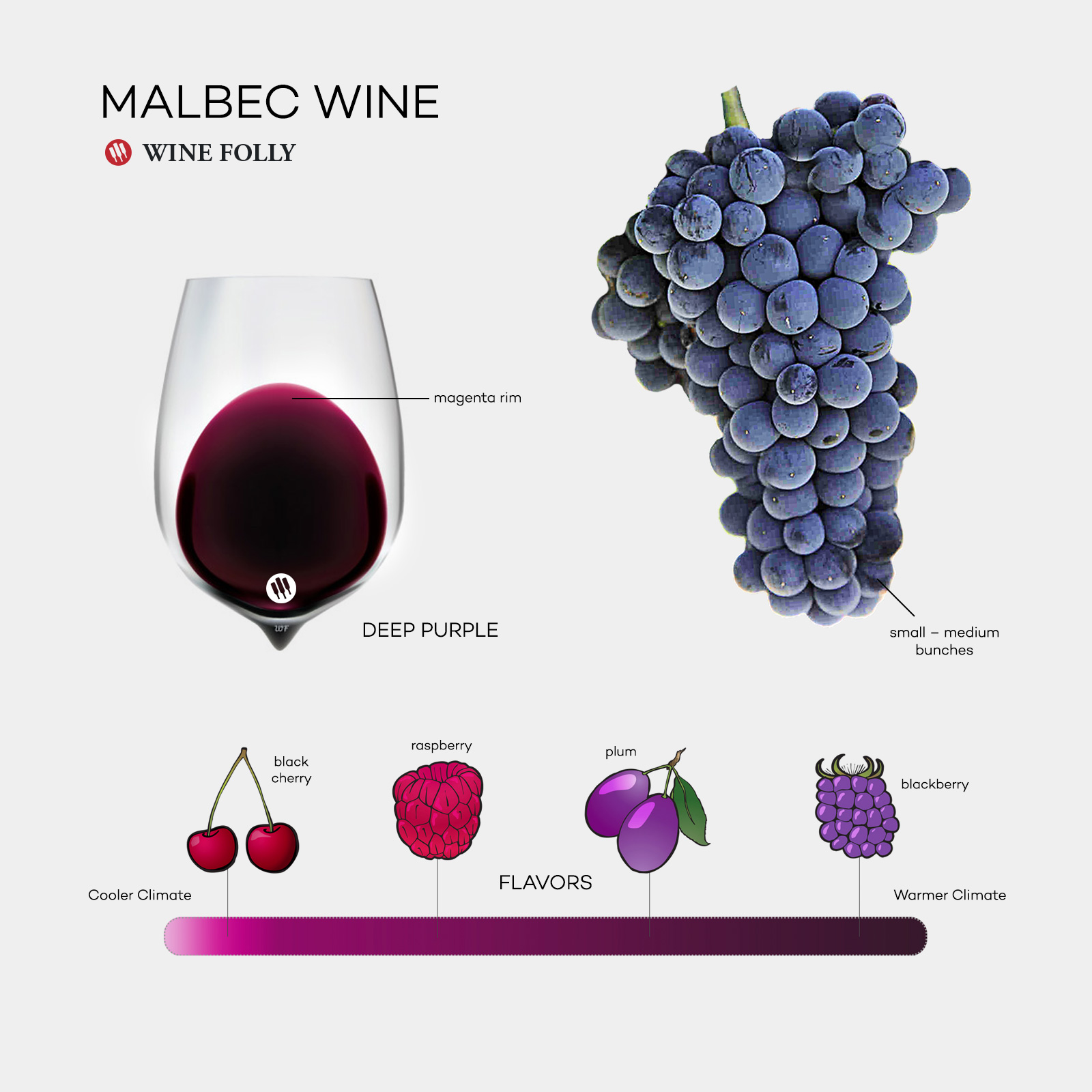
Fun Facts About Malbec
- Malbec loves the sun. Sunshine helps ripen its thick skins. These skins have high levels of the color pigment (anthocyanin).
- Argentina “saved” Malbec. Before it took over Argentina, it was just a minor grape in South-West France. Today, it accounts for roughly 40% of Argentina’s red grape vineyards and is spread throughout the world.
- Blind tasting clue! One of Malbec’s classic “tells” in a blind tasting is its bright magenta rim and opaque purple color.
- The higher the better. Malbec struggles to maintain acidity in lower elevations but does fabulously in higher elevation spots where there is a large diurnal temperature shift (cold nights and sunny days).
- Malbec is a team player. Single-varietal Malbec wines are tasty, but be sure to try it in a blend with Cabernet Sauvignon and in red Bordeaux blends.
- Mark your calendars! World Malbec Day is April 17th.
- Less oak than you might think. Malbec is so fruity and smooth, it often doesn’t need as much oak aging. Affordable versions may only get 4–6 months in oak whereas, top-shelf Malbec gets as much as 18–20 months in oak.
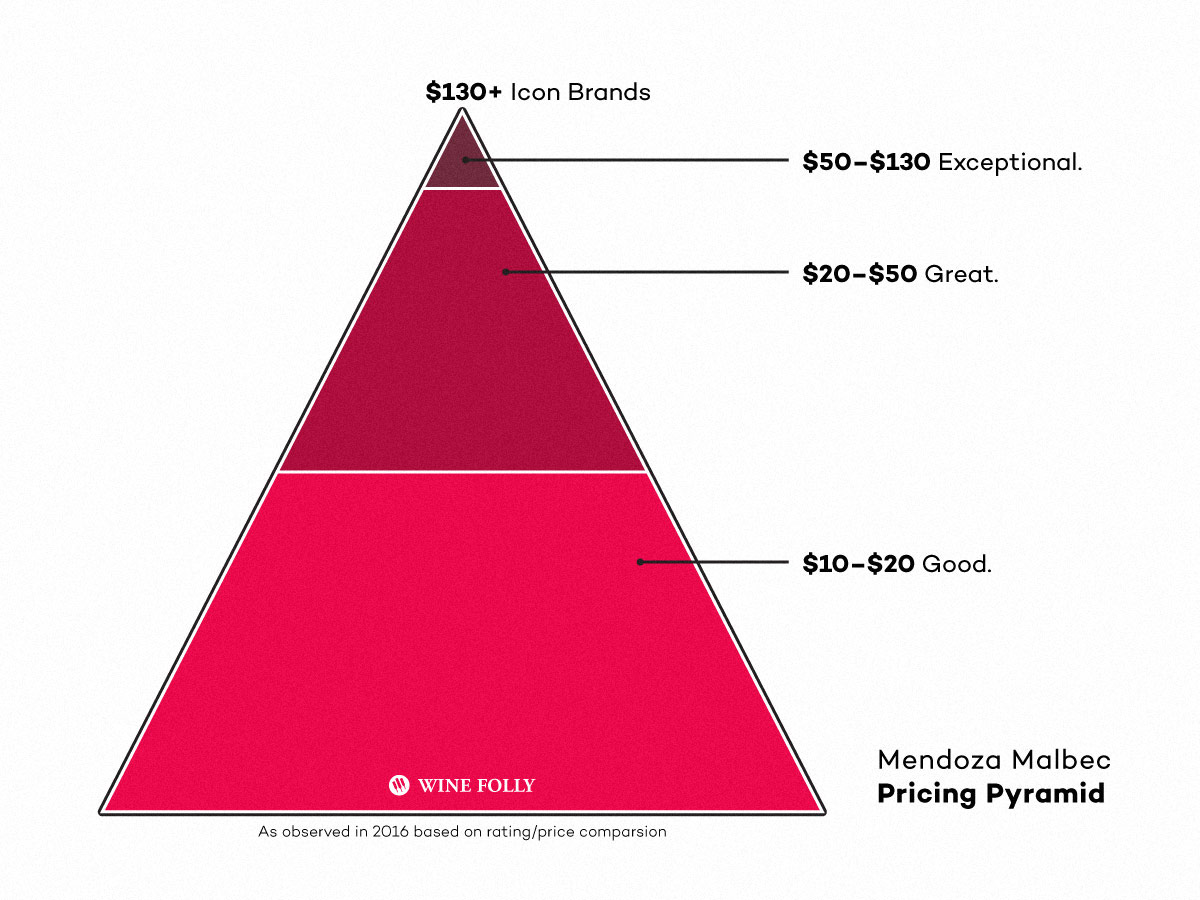
How Much Should I Spend on Malbec?
There are three unofficial quality tiers of Malbec from Argentina based on price. Here’s what we’ve observed:
- $12–$20 Good Introductory Wines. Entry-level wines, usually produced in large quantities, focus on Malbec’s smooth, juicy-fruity style without much oak. (since oak aging adds to the cost!)
- $20–$50 Great. This is what you should expect to spend for higher-end reserva, or select vineyard wines from high-quality producers of all sizes. Extended aging (in tank or oak) brings out rich chocolatey flavors and velvety textures.
- $50–$200 Exceptional. The iconic producers in sub-regions of Mendoza charge well above $100 a bottle, but you can find top-quality bottles for around $50 from lesser-known producers. When you compare that to the iconic wines of Burgundy, which start at $250, Malbec offers incredible quality for the price.
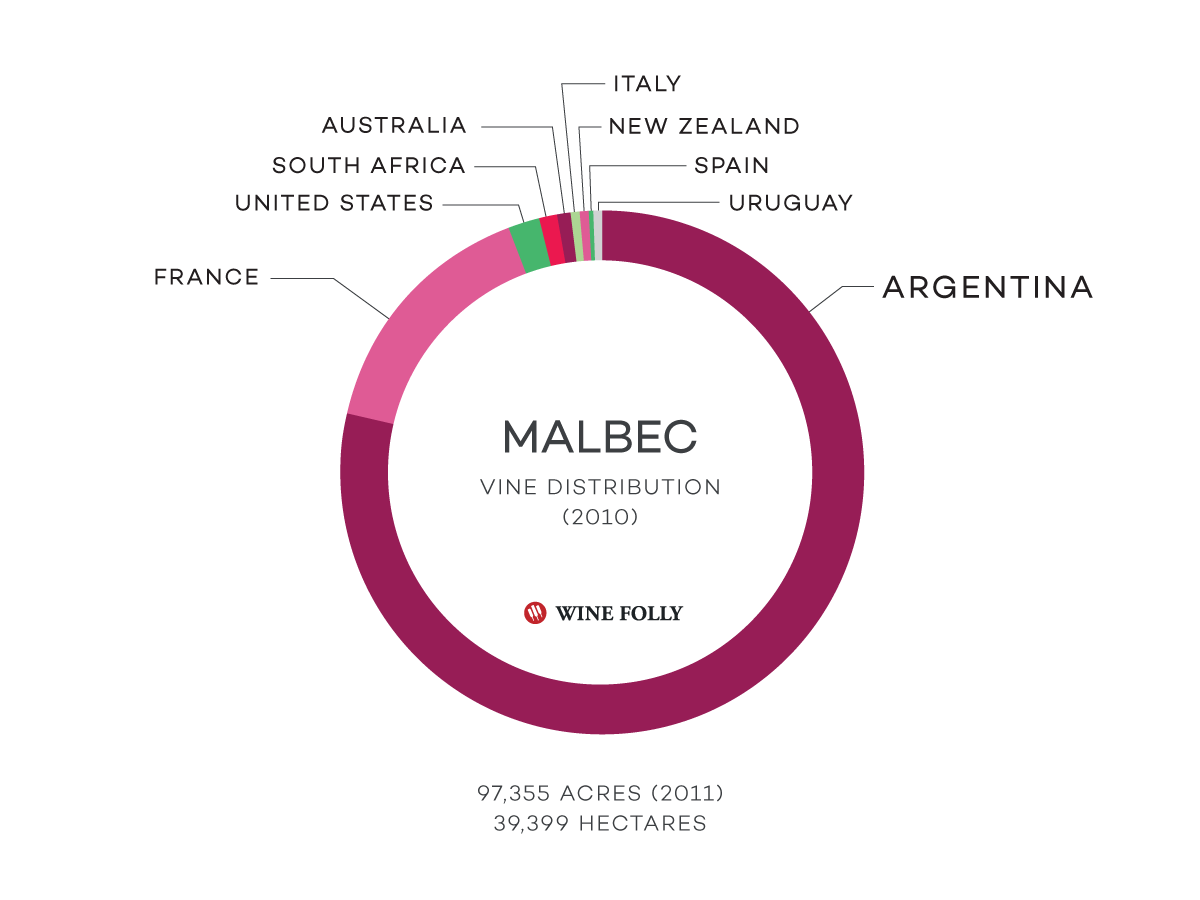
Hunting For Quality?
Here’s what to look for when seeking out high-quality Malbec wine:
Extended Aging: Good versions can handle cellar aging. Typically, the more time a wine spends in the cellar, the more investment the winery makes into giving it ample time to develop before it hits the market. It’s not uncommon to see quality Malbec wines age for 15–24 months before release (regardless of whether it’s oaked or neutral oak/tank-aged).
Tech Notes: Acidity (sourness) is usually between 5–7 g/L, and pH ranges from 3.65–3.75 in the top-rated wines we found tech sheets on. Also, residual sugar is little to none (typically less than 1 g/L).
Region Specific: The Uco Valley and Luján de Cuyo in Mendoza consistently produce top-rated Malbec wines. Outside of Argentina, look to Cahors, France, and Walla Walla on the Oregon / Washington border.
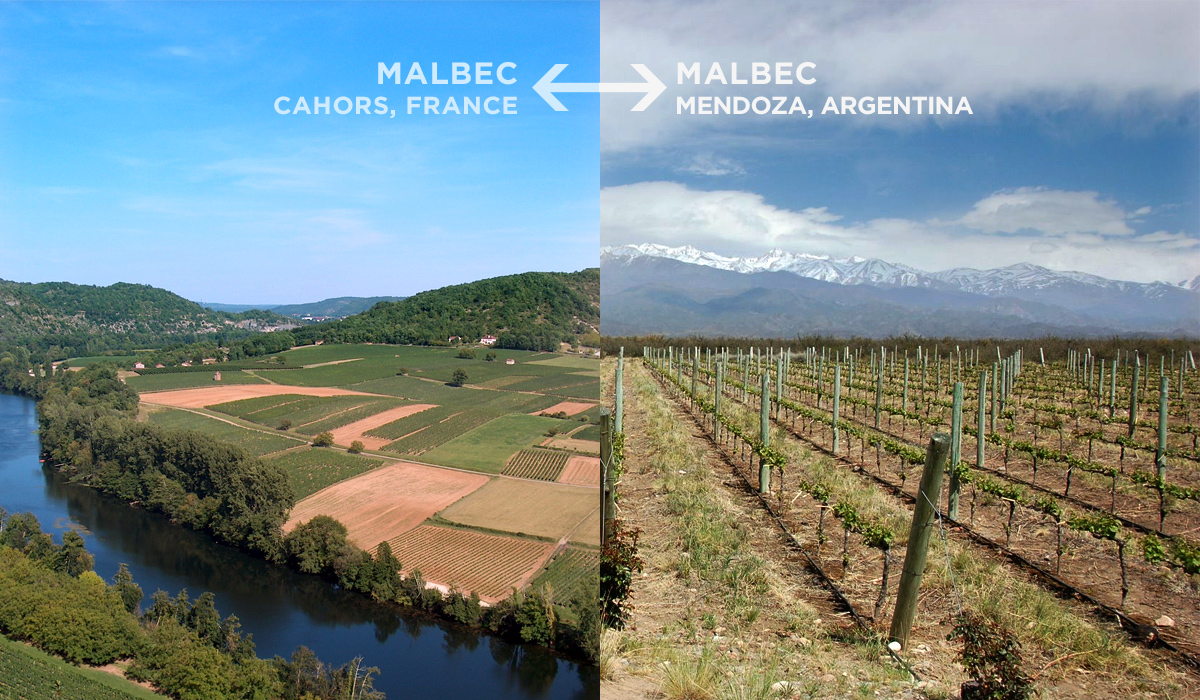
A Lil’ Malbec Wine History
Malbec, which is also called Côt (“coat”) or “Auxerrois” (not to be confused with Auxerrois Blanc), comes from Sud-Ouest, France. The thick-skinned grape was a natural cross of two lesser-known varieties: Prunelard from Gaillac and Magdeleine Noire de Charentes from Montpellier (the mother of Merlot!).
Malbec is an important blending grape in Bordeaux, but it has never emerged as a top grape due to its poor resistance to fungal diseases and pests.
The grape really didn’t gain fame until it was brought into Mendoza, Argentina. It was first planted by a nostalgic French botanist in 1868, who hoped to improve wine quality in the region. Today, it’s Argentina’s most important grape.
